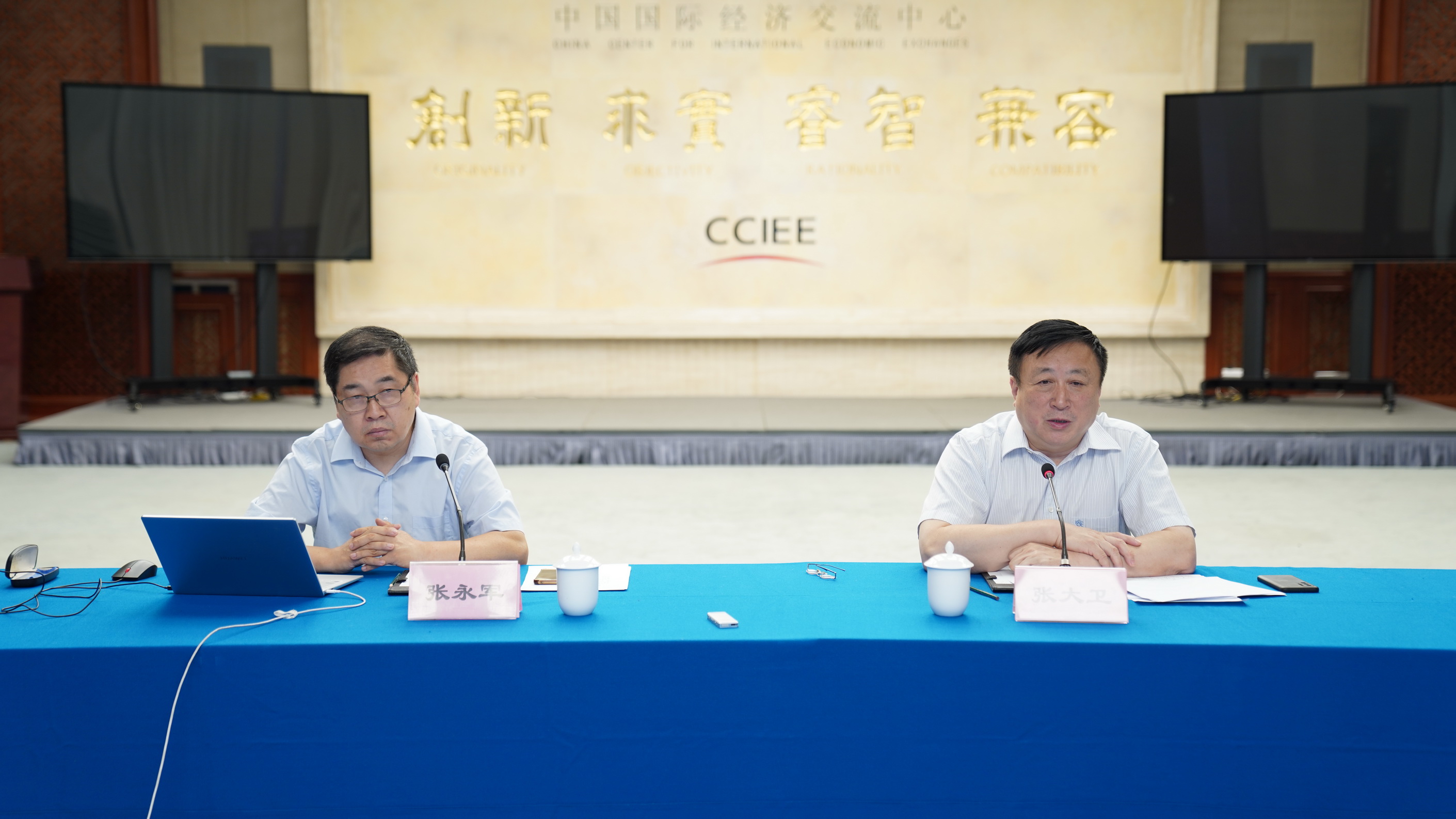Analysis on Trends of International Logistics and Shipping-CCIEE Holds the 143rd “Monthly Economic Talk”
- Time:2021-08-25
- source:CCIEE
On 25 August 2021, China Center for International Economic Exchanges (CCIEE) held the 143rd “Monthly Economic Talk” online on “trends of international logistics and shipping”. Zhang Dawei, Secretary-General and Vice Chairman of CCIEE, presided over the talk, and Jiang Dashan, Vice President of China Waterborne Transport Research Institute, Zhang Yongjun, Deputy Chief Economist of CCIEE, Song Xiaoming, Vice President of Guangzhou Port Group, and Liu Chunting, General Manager of Transport Management Department of China Merchants Energy Shipping, delivered speeches respectively.

Jiang pointed out that, changes in relation between demand and supply is the largest factor driving up the cost of shipping. After the outbreak of the COVID-19 pandemic, the demand for shipping worldwide grew much faster than supply, in addition to which factors like pricing ability, cost and impact of the pandemic also pinned the cost of shipping at a higher level than that before the pandemic. He put forward several effective solutions for the issue, including ensuring safety and effectiveness of the maritime supply chain, enhancing cooperation between governments and enterprises, setting up effective coordinated mechanism for check and test, improving proportion of long-term contract for container and bulk cargo transportation, resolving the “five difficulties” of sailors, namely virus testing, disembarkation, treatment, shifting and going home, and improving the level of automatic operation of port.
Zhang Yongjun pointed out that developed economies’ bailing out packages have led to increase in prices of both bulk commodities and shipping cost. However, along with the reduction of currency supply in developed economies, the prices of bulk commodities would gradually fall back, and consequently the shipping cost will decrease due to the lack of price driver. He viewed that despite of strengthening prevention and control of the pandemic, to curb the trend of soaring price of international shipping, different countries should proactively work together to normalize the international trade, recover development of global economy that is more balanced, and prevent economic decoupling.
Song Xiaoming held the opinion that at present, none of Chinese major logistics companies has the power to influence the international logistics chain and supply chain, which does not match with China’s capacity as a “manufacturing giant”. Problems faced by China’s shipping market, such as port congestion, short-term shortage of sailors and other black swan events, have become more outstanding amidst the pandemic. He suggested that to ease the pressure on shipping demand and supply, Chinese enterprises of import and export can take measures like merging multiple ports, turning to air transports and increasing running frequency of China Railway Express. They can also sign up long-term contracts with logistics companies and take the proactive position at logistics supply chain based on relevant cost, insurance and freight (CIF) policies. Besides, port and airport companies should coordinate operation within the region and share information together.
Liu Chunting said that because of the pandemic, big fluctuations showed up in international transport of crude oil and dry bulks and container market in Asia. He pointed out that since 2021, global economy has experienced fast recovery and the trade volume increased as well. The market of very large crude carrier (VLCC) will gradually recover from the fourth quarter. In the future, the market of bulk cargo will go through stages from recovery to expansion. For the latter half of 2021, the volume of maritime trade is expected to maintain robust growth while the shipping cost may remain high.
The speech session was followed by interactions between the experts and the media. Research staff and member companies of CCIEE, research institutes, enterprises and news agencies attended the meeting through virtual approach.
